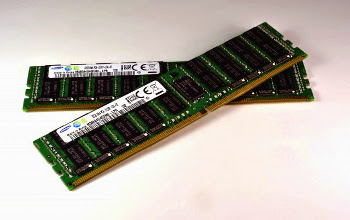DDR4 SDRAM (Double Data Rate four Synchronous Dynamic Random Access Memory) is the RAM of the fourth generation of high speed DDR serves to store data when the computer is running. Some vendors such as Samsung, SK Hynix, and Micron, has been producing DDR4 memory board. But a new generation of memory will be used on a tablet PC or at least starting in 2015, or 18 months from now. While computer server will use it towards the end of next year.
Prior to Intel and AMD processors that support is available, the user will not be able to enjoy DDR4. As confirmed to Computerworld, Intel and AMD hopes to support DDR4 memory on the processor board they start next year.
Intel processor supporting Broadwell DDR4 is to be launched in the second half of 2014. Broadwell is a 14 nanometer chip Intel first produced and is a second-generation 3D processor.
Broadwell will be used for server first. Meanwhile, the client PC will use Intel's Skylake architecture. In addition to supporting DDR4, Skylake also supports PCIe 4.0 and SATA Express.
Meanwhile, AMD will support DDR4 through Opteron server processor which will also be issued next year. For high-end servers that do not use the memory controller of Intel / AMD, such as IBM and Fujitsu, also launched in 2014.
Compared with the previous generation of memory, ie DDR3, DDR4 advantages include performance twice as high, twice the capacity of the base (16GB), and lower power consumption 20% -40% than the technology used today. DDR memory technology was launched in 2002, followed in 2004 DDR2, DDR3 2007, and DDR4 2013.
Prior to Intel and AMD processors that support is available, the user will not be able to enjoy DDR4. As confirmed to Computerworld, Intel and AMD hopes to support DDR4 memory on the processor board they start next year.
Intel processor supporting Broadwell DDR4 is to be launched in the second half of 2014. Broadwell is a 14 nanometer chip Intel first produced and is a second-generation 3D processor.
Broadwell will be used for server first. Meanwhile, the client PC will use Intel's Skylake architecture. In addition to supporting DDR4, Skylake also supports PCIe 4.0 and SATA Express.
Meanwhile, AMD will support DDR4 through Opteron server processor which will also be issued next year. For high-end servers that do not use the memory controller of Intel / AMD, such as IBM and Fujitsu, also launched in 2014.
Compared with the previous generation of memory, ie DDR3, DDR4 advantages include performance twice as high, twice the capacity of the base (16GB), and lower power consumption 20% -40% than the technology used today. DDR memory technology was launched in 2002, followed in 2004 DDR2, DDR3 2007, and DDR4 2013.
See Also
- DRAM (Dynamic Random Access Memory)
- FPM DRAM (Fast Page Mode DRAM)
- EDO RAM (Extended Data Out RAM)
- SDRAM (Synchronous Dynamic Random Access Memory)
- RD RAM (Rambus Dynamic Random Access Memory)
- DDR SDRAM (Double Data Rate Synchronous Dynamic Random Access Memory)
- DDR2 SDRAM (Double Data Rate two Synchronous Dynamic Random Access Memory)
- DDR3 SDRAM (Double Data Rate three Synchronous Dynamic Random Access Memory)
- SRAM (Static RAM)
- VRAM (Video Random Access Memory)
- SGRAM (Synchronous Graphics RAM)
